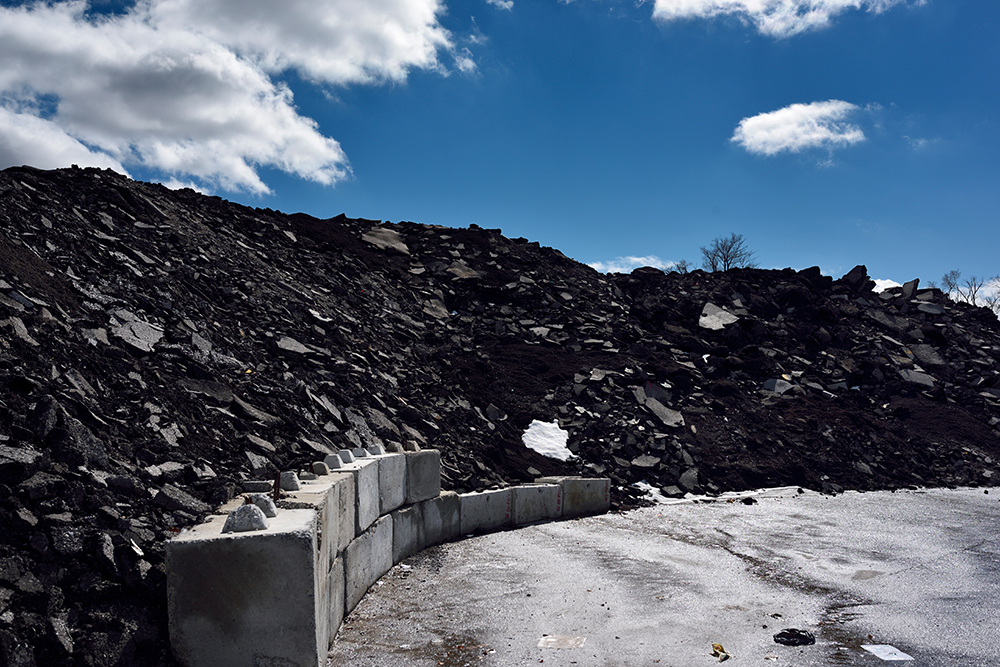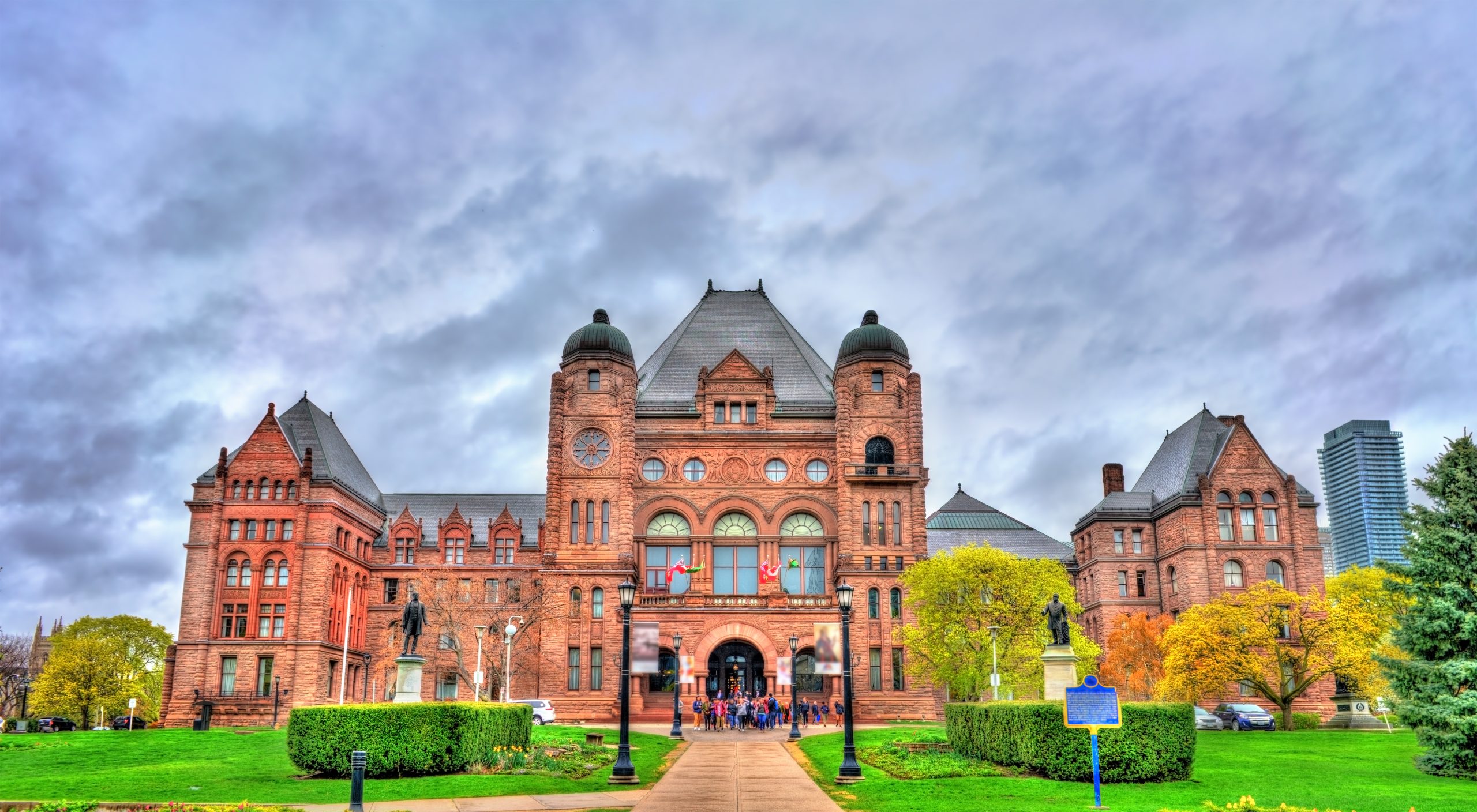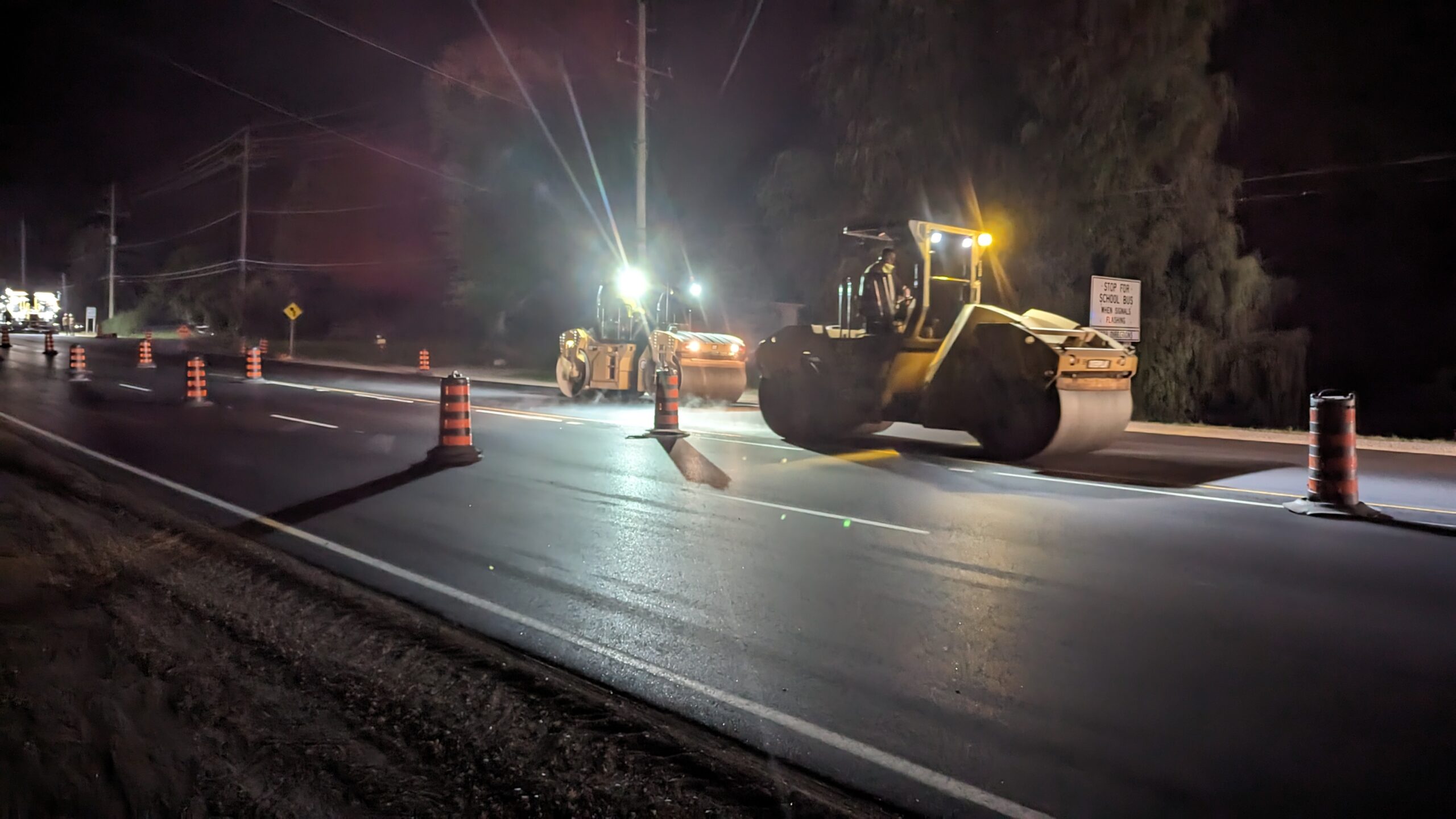The Good Roads annual general meeting takes place Tuesday, April 23, 2024 at the Fairmont Royal York during their annual conference. Copies of the 2023 minutes and 2024 agenda are available for download below:
Archives: News Articles
News Article Description
Premier Doug Ford and Party Leaders to Address Municipal Conference
Good Roads Welcomes Municipal Infrastructure Leaders From Across Ontario at 130th Annual Conference
April 15, 2024, Oakville, ON – Ontario’s Premier Doug Ford is set to address more than 2,000 attendees at the 130th annual Good Roads Conference taking place at the Fairmont Royal York in downtown Toronto from April 21 – April 24, 2024.
The annual Good Roads Conference brings together different levels of government from Ontario over four days focusing on municipal transportation and infrastructure. Renowned urban planner Jeff Speck and climate scientist Katharine Hayhoe will provide keynote addresses. There are more than 80 sessions covering a wide range of topics important to municipalities.
“Roads are the largest and most expensive infrastructure for local governments. Good roads have a direct correlation to economic vitality and enhanced quality of life for constituents” said Scott Butler, Executive Director, Good Roads. “This conference is the one time each year that leaders from the municipal sector, business and academia come together to chart a better way forward.”
“At a time when Ontario municipalities are facing many complex and unprecedented challenges – climate change, outdated fiscal arrangements, a rapidly evolving technological landscape – these discussions are increasingly important.” said Mr. Butler.
Premier Doug Ford is scheduled to take the stage on Tuesday, April 23 at 8:50 am, Marit Stiles at 2:30 pm on Monday, April 22, Bonnie Crombie at 2:50 pm on Monday, April 22, and Mike Schreiner at 10:05 am on Tuesday, April 23. You must be registered to attend this event. For media passes, please contact Rachel Swiednicki. To view the full conference program, please visit www.GoodRoads.ca/Conference.
Good Roads is a municipal association concerned with the advancement of roads and other infrastructure in Ontario. Based in Oakville, Ontario, we have been devoted to the cause of better roads since 1894. Originally known as the Ontario Good Roads Association (and still using that name corporately), we have more than 430 member governments, including most of Ontario’s municipalities and a growing number of First Nations, as well as dozens of affiliated corporate members in the transportation and infrastructure sectors. Our purpose, in part, is to connect our members to each other, to other levels of government, and to relevant companies in the private sector. Our members look to us for training, knowledge, political advocacy, and answers to their most pressing problems. Good Roads is resolutely independent.
-30-
For more information, please contact:
Rachel Swiednicki
Manager, Communications and Marketing
Good Roads
1525 Cornwall Road, Unit 22
Oakville, ON L6J 0B2
905-630-0542
2024 Ontario Paving Report
Good Roads recognized the need to obtain accurate and current data on paving practices, trends, and quantities, of materials used in municipal asphalt paving to be able to better monitor and evaluate the effects of current practices and specification on the consumption of paving materials including RAP. This report captures the dedicated collaboration among stakeholders in the road and infrastructure sector.
The initiative leading to this report started in 2019 with RAP quantity estimation from satellite images, then evolved to be a collaboration study between Good Roads GR, Ontario Asphalt Pavement Council (OAPC – a Council of Ontario Road Builders’ Association, ORBA), the Municipal Engineers Association (MEA), to quantify the amounts and identify best practices of RAP stockpiling in Ontario.
Click Here to View the Full Report
2024 Provincial Budget: Big on Capital, Short on Maintenance
Good Roads is pleased to provide its members with key highlights of the Government of Ontario’s 2024 Budget. Below, we outline important developments that directly impact member municipalities:
- Infrastructure Investment Focus: The provincial government has allocated significant funding towards new infrastructure projects, including a $1 billion municipal infrastructure fund aimed at supporting home construction. Additionally, over $600 million has been earmarked for water and wastewater infrastructure upgrades. This was announced in the lead up to the budget.
- Community Sport and Recreation Fund: A new $200 million fund has been established to support the creation and upgrading of community sport and recreation infrastructure. No details have been announced on program design, but its likely municipalities would need to apply for such funding.
- Property Tax Relief for Rental Apartments: Municipalities will now have the ability to charge up to 35 per cent lower property tax rates on new purpose-built rental apartments. While this initiative aims to stimulate the construction of rental housing, it’s essential to note that it falls short of addressing broader funding concerns raised by municipalities in light of Bill 23.
- Ontario Transit Investment Fund: The launch of the Ontario Transit Investment Fund, with an annual allocation of $5 million, is aimed at delivering local and intercommunity transportation projects in underserved areas, particularly in rural regions. This initiative essentially makes the Community Transportation Grant Program permanent.
- Building Ontario Fund: The establishment of Ontario’s new infrastructure bank, the Building Ontario Fund, is noteworthy. With an initial allocation of $3 billion, the fund aims to support critical infrastructure projects and attract private capital to meet the growing needs of the province. It also explores opportunities to support large-scale municipal infrastructure projects.
While these initiatives represent positive steps towards addressing critical infrastructure needs and supporting community development, it’s important to highlight some areas of concern:
- Lack of Investment in Rural Road Safety: Despite some positive initiatives, the budget overlooks the pressing issue of rural road safety. Good Roads’ advocacy for improved rural road infrastructure and safety measures has not received adequate attention in this budget. Rural communities face unique challenges concerning road safety, and without sufficient investment, these issues may persist, posing risks to all road users.
- Maintenance Funding Gap: The budget lacks sufficient funding for maintaining existing infrastructure, posing challenges for municipalities grappling with aging infrastructure systems. Sustainable funding for maintenance and rehabilitation remains a pressing issue that requires attention.
- Comprehensive Funding Solutions Needed: While targeted investments are welcomed, a comprehensive approach to municipal funding is necessary to address the diverse needs of municipalities effectively. Sustainable funding models are essential for ensuring the long-term viability and resilience of our communities.
As advocates for municipal transportation and infrastructure, it’s imperative to continue engaging with policymakers to address these concerns and advocate for the needs of our municipalities. We encourage all members to stay informed and actively participate in discussions surrounding municipal transportation and infrastructure.
The Road Authority (TRA) – Infrastructure Products Prequalification Survey
The Municipal Paving Inspector checklist is now available for download.
Good Roads Hot Mix Liaison Committee in conjunction with OAPC have published and released their “Municipal Paving Inspector Checklist” which is now available for download at the link below.
Good Roads is opening its Call for Nominations for its 2024/25 Board of Directors.
Pursuant to Good Roads Policy B-008, the Nominating Committee of the Good Roads Board of Directors will present a slate of 11 directors to serve as the 2024-2025 Good Roads Board of Directors. This slate will be presented to attendees at the Annual Good Roads Conference taking place April 21 – April 24, 2024, at the Fairmont Royal York in Toronto, Ontario. It will be comprised from Good Roads’ municipal and First Nations membership.
The Good Roads Board of Directors understands the strength that diversity provides and is committed to achieving equity and inclusion on its leadership team. Women and individuals from equity seeking groups are encouraged to apply.
The following directors will automatically serve on the 2024-2025 Board of Directors:
- President: Antoine Boucher – Director of Public Works and Engineering, Municipality of East Ferris;
- First Vice-President: Cheryl Fort – Mayor, Township of Hornepayne;
- Second Vice-President: Paul Ainslie – Councillor, Ward 24, Scarborough-Guildwood, City of Toronto and
- Immediate Past President: John Parsons – Division Manager, Road Operations, City of London;
The slate will satisfy the geographic requirements prescribed in Section 12 of the Constitution as well as the criteria in Policy B-008.
The following vacancies need to be filled:
| City of Toronto | 0 Vacancy | |
| The City of Toronto Zone consists of the City of Toronto. | ||
| Northern Zone | 2 Vacancy | |
| The Northern Zone consists of the municipalities and First Nations in the Districts of Algoma, Cochrane, Kenora, Manitoulin Island, Nipissing, Parry Sound, Rainy River, Sudbury, Thunder Bay and Timiskaming; municipalities in and including the District of Muskoka and the City of Greater Sudbury. | ||
| South Central Zone | 0 Vacancies | |
| The South Central Zone consists of the municipalities within and First Nations adjacent to the Counties of Dufferin, Grey, Simcoe, and Wellington, and municipalities in and including the Regional Municipalities of Durham, Halton, Niagara, Peel and York, and the City of Hamilton. | ||
| Southeast Zone | 2 Vacancy | |
| The Southeast Zone consists of the municipalities within and First Nations adjacent to the Counties of Frontenac, Haliburton, Hastings, Lanark, Leeds and Grenville, Lennox and Addington, Northumberland, Peterborough, Prescott and Russell, Prince Edward, Renfrew, and Stormont, Dundas and Glengarry, and the Cities of Kawartha Lakes and Ottawa. | ||
| Southwest Zone | 1 Vacancy | |
| The Southwest Zone consists of the municipalities within and First Nations adjacent to the Counties of Brant, Bruce, Elgin, Essex, Haldimand, Huron, Lambton, Middlesex, Norfolk, Oxford, and Perth, the municipality of Chatham-Kent, and municipalities in and including the Regional Municipality of Waterloo. | ||
Access the Good Roads Zone Map here.
Those elected shall serve for a two-year term ending on Wednesday, April 01, 2026.
The Nominating Committee will meet on Tuesday, February 20, 2024, to recommend a slate of directors to the membership. The Nominating Committee is comprised of the following directors:
- Chair: Paul Schoppmann, Immediate Past President
- Vice Chair: Dave Burton, Past President
- Members: Antoine Boucher, Good Roads First Vice-President, Cheryl Fort, Good Roads Second Vice-President, Justin Towndale, Good Roads Director
Questions regarding the nomination process or serving on the Board of Directors can be directed to Scott Butler at scott@goodroads.ca or 416-564-4319.
Supreme Court Decision Expands Municipal Liability
In the case of R v. Greater Sudbury, the Supreme Court of Canada ruled that an owner (i.e., a municipality) cannot evade responsibility for a workplace death by claiming to have contractually delegated responsibility for safety to a project contractor.
This decision will have significant implications for municipalities. Now municipalities are exposed to broader responsibilities that owners, constructors, and employers have under the Occupational Health & Safety Act (OHSA).
Prior to the ruling, municipalities were able to delegate health and safety responsibilities to a general contractor, who would assume primary accountability for these obligations. However, this has now changed. As a result of this ruling, municipalities effectively assume the OHSA obligations as owners, constructors, and employers on capital projects.
Good Roads strongly recommends that its member municipalities carefully review the Supreme Court decision and consult their legal counsel. Contract language may need to be reviewed and amended. Vigilant monitoring of construction sites is now crucial to ensure compliance with applicable workplace safety requirements.
This ruling increases a municipality’s risk exposure which will also increase the cost and time needed for construction projects.
Good Roads will continue to monitor this evolving situation and advocate for the Government of Ontario to provide a solution.
Internationally Recognized Road Safety Practice Comes to Ontario
Municipal road association is creating safer roads through world class training.
September 25, 2023, Oakville, ON – Good Roads, Ontario’s oldest municipal association is partnering with Safe System Solutions from Melbourne, Australia to bring an internationally recognized road safety practice to Ontario.
The Good Roads Road Safety Audit (RSA) course trains transportation professionals to recognize risks associated with existing road networks as well as risks contained in proposed developments.
“We are re-imaging the way we look at our roads and road safety in Ontario. Reducing risk exposure for road users, the likelihood of crash occurrence can be reduced, and the severity of crashes can be reduced by a few simple measures.” said Scott Butler, Executive Director, Good Roads.
A road safety audit is not simply a compliance check against design standards or other technical guidance. An RSA recognizes that strict adherence to design standards does not guarantee safety since standards are not always written with safety as a primary objective. A road safety audit is an examination of a proposed road design to identify road safety deficiencies so that they can be eliminated or mitigated before they are built. In this way, a road safety audit is a proactive process which attempts to prevent crashes from occurring, as opposed to a crash investigation and some other road safety engineering activities which are a reactive process and attempt to correct existing problems so that further crashes are less likely.
“We’ve witnessed this RSA work in countries around the world to save lives. In 2020, Ontario had 530 people killed in collisions on our roads and a further 31,792 people were injured. RSAs can significantly reduce these numbers.” continued Mr. Butler. “Safe System Solutions is a world leader in applied road safety. We have run technical training to over 4,000 engineers, highway designers and technical officers. Because we’re practitioners, having done over 3,000 road safety audits across the world, our training courses are practical and create an immediate benefit to the community.” said Kenn Beer, Principal Engineer, Safe System Solutions.
The Road Safety Audit Course is being offered only for a limited time in October in two locations in Ontario.
Good Roads is a municipal association concerned with the advancement of roads and other infrastructure in Ontario. Based in Oakville, Ontario, we have been devoted to the cause of better roads since 1894. Originally known as the Ontario Good Roads Association (and still using that name corporately), we have more than 450 member governments, including most of Ontario’s municipalities and a growing number of First Nations, as well as dozens of affiliated corporate members in the transportation and infrastructure sectors. Our purpose, in part, is to connect our members to each other, to other levels of government, and to relevant companies in the private sector. Our members look to us for training, knowledge, political advocacy, and answers to their most pressing problems. Good Roads is resolutely independent.
-30-
For more information, please contact:
Rachel Swiednicki
Manager, Communications and Marketing
Good Roads
1525 Cornwall Road, Unit 22
Oakville, ON L6J 0B2
C. 905-630-0542
rachel@qoodroads.ca
www.GoodRoads.ca
Paving the Way to New Educational Experiences
Good Roads, a municipal association dedicated to promoting the improvement of Ontario’s roads, has taken a bold step into the world of online education. With the support of D2L Brightspace, the organization is venturing into the digital realm to extend its reach to a broader community of learners. By embracing online learning, Good Roads has succeeded in engaging new audiences within the private sector and First Nations communities, empowering them with vital knowledge and resources.
For more details view the case study and blog on the D2L website.















